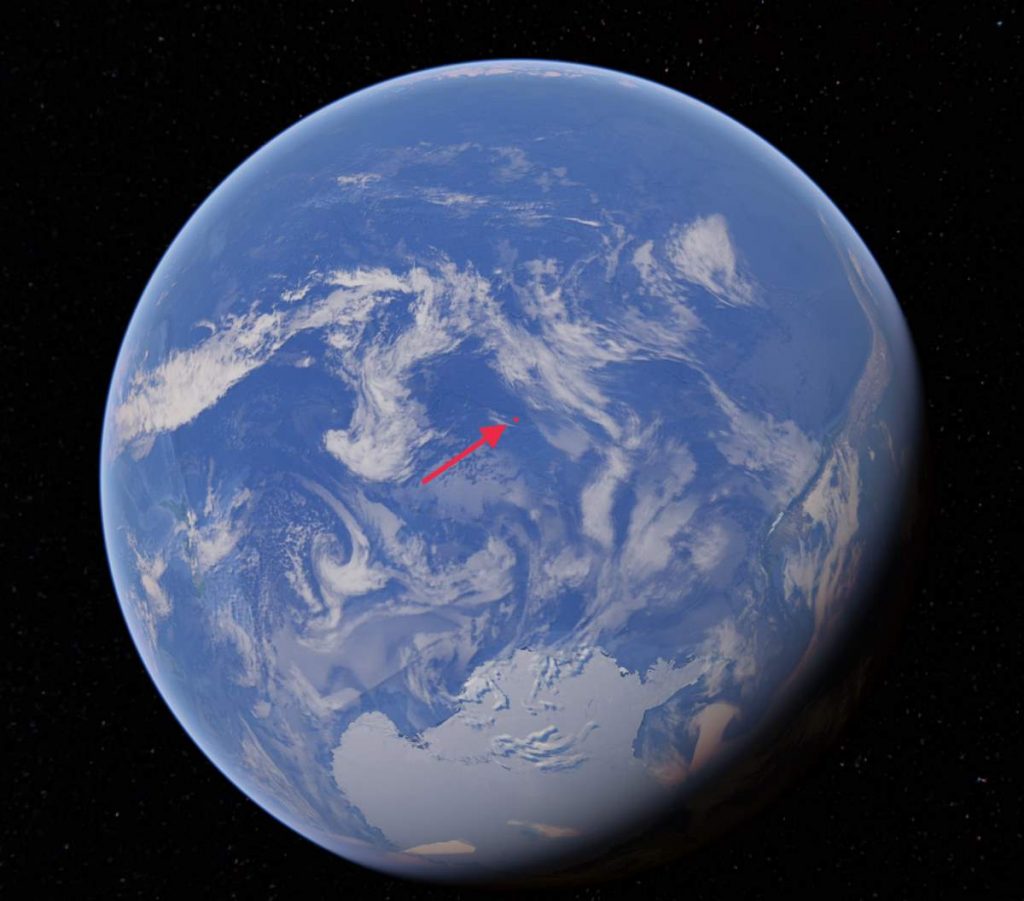On October 4, 1957, the Soviet Union launched Sputnik 1, the first human-made object to orbit Earth. This event marks the beginning of humanity’s space exploration history. After that, humanity went to the moon, astronauts and cosmonauts performed countless spacewalks, and since the arrival of Expedition 1 on November 2, 2000, the International Space Station station has been continuously occupied. To date, this is the longest continuous human presence in space, having surpassed the previous record of 9 years and 357 days held by Mir.
But, maybe even more important, we launched thousands of artificial satellites into the Earth’s orbit. These artificial satellites shape our modern life: weather forecasts, broadcasting, communication, and GPS are just a few examples. But, there’s a side effect: just like here on the Earth, we are slowly filling the most important part just above us, with junk. And this junk can end space exploration, and destroy our modern way of life. This (very possible) scenario known as the Kessler Syndrome, proposed by the American astrophysicist and former NASA scientist Donald J. Kessler in 1978.
Would you want to live as if we’re in the 1940s? I mean, no more satellite communications networks, weather satellites, GPS, live international news, flight information, etc… What’s more, no more deep space probes, and future missions to the moon or Mars are impossible. Imagine that we have imprisoned ourselves on Earth while making the world much more difficult to navigate.
Welcome to the Kessler Syndrome!
What is Kessler Syndrome?
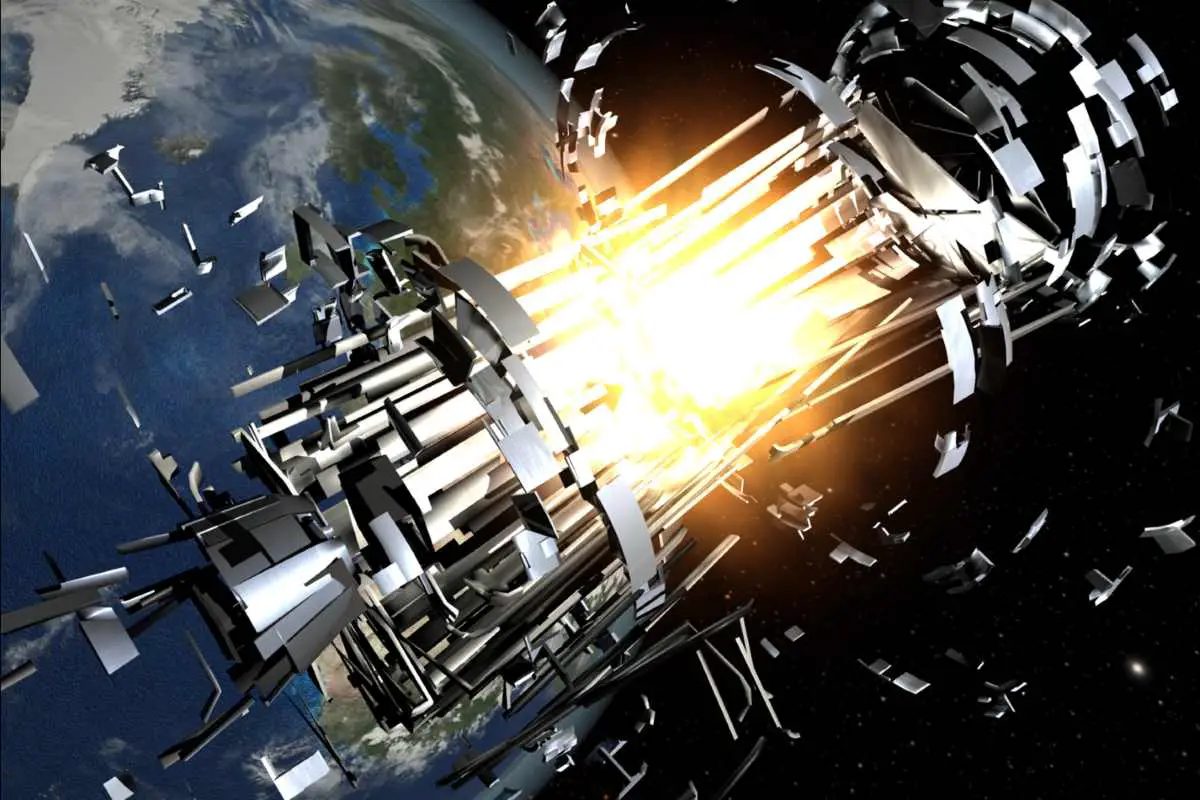
Proposed by NASA scientist Donald J. Kessler in 1978, The Kessler Syndrome is a theoretical (but very possible) scenario in which the density of objects in low Earth orbit (LEO) due to space pollution is high enough that collisions between objects could cause a cascade in which each collision generates space debris that increases the likelihood of further collisions. This would make space activities very difficult, or even impossible until the debris cleared, which could take a few decades of time.
Kessler Syndrome: Some Numbers
When space exploration began, there was no way of dealing with the vehicles, or, jettisoned rocket parts, once they completed their jobs. So they just left there, floating around the Earth at very high speeds
- According to NASA, more than 500,000 pieces of debris, or “space junk,” are tracked as they orbit the Earth.
- More than 20,000 pieces of this debris larger than a softball. There are 500,000 pieces of debris the size of a marble or larger.
- There are many millions of pieces of debris that are so small they can’t be tracked.
- The space debris orbits the Earth normally in the order of around 17,000 mph or 27,000 km/h. This is fast enough for a relatively small piece of orbital debris to damage a satellite or a spacecraft. Some of them moving even higher speeds, like 10 kilometers per second, or 22,370 mph/36,000 km/h.
- Moving at 10 kilometers per second, according to NASA, just a 1-centimeter paint fleck is capable of inflicting the same damage as a 550-pound (250 kg) object traveling 60 miles per hour (96.5 km/h) on earth.
- A 10-centimeter (~4 in) projectile would be comparable to 7 kilograms of TNT.
- There are also millions of micrometeoroids (see notes 1) orbiting the Earth at very high speeds.
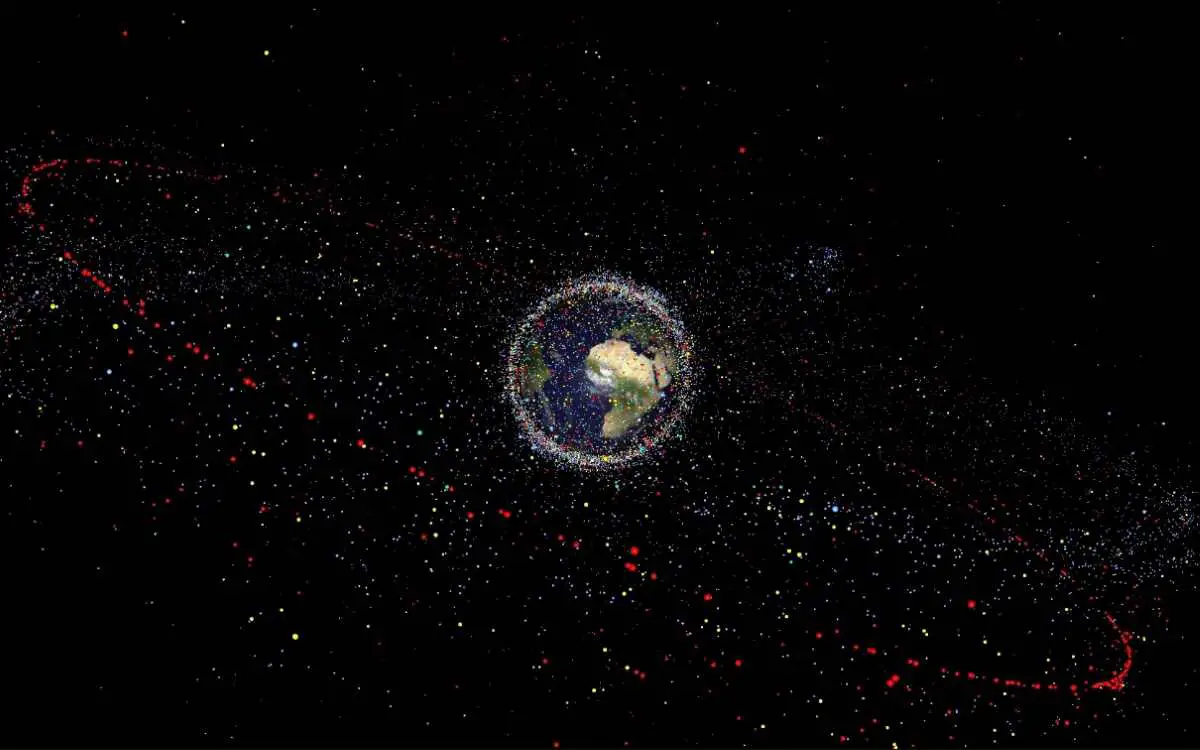
With so much orbital debris, there have been surprisingly few disastrous collisions. In 1996, a French satellite was hit and damaged by debris from a French rocket that had exploded a decade earlier.
On January 11, 2007, China’s anti-satellite test, which used a missile to destroy an old weather satellite, added more than 3,000 pieces to the debris problem.
On February 10, 2009, a defunct Russian satellite collided with and destroyed a functioning U.S. Iridium commercial satellite. The collision added more than 2,000 pieces of trackable debris to the inventory of space junk.
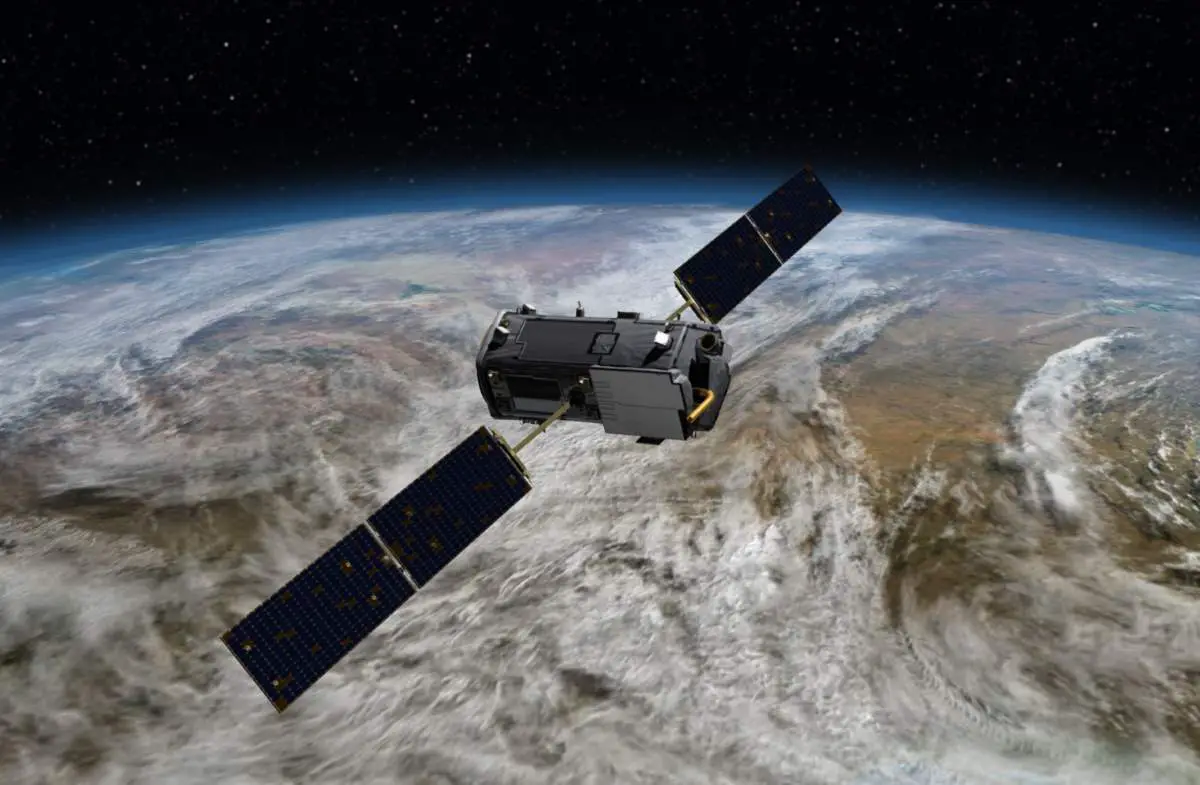
Related: What happens to old spacecraft?
A Chain Reaction
But things may get much worse. In 1978, Donald J. Kessler proposed a scenario: since the spent rockets, satellites and other space trash have accumulated in orbit increasing the likelihood of collision with other debris, these collisions create more debris creating a runaway chain reaction of collisions and even more debris. This scenario is now known as known as the Kessler Syndrome.
This domino effect and feedback runaway can create a physically impassable barrier in the Low Earth Orbit (LEO, see notes 2) to space exploration that occurs in higher orbits.

In the 1970s, NASA has experienced a small-scale Kessler syndrome, when derelict Delta rockets (see notes 3) left in orbit began to explode creating shrapnel clouds. Donald J. Kessler, then an astrophysicist working at NASA, demonstrated that once the amount of debris in a particular orbit reaches critical mass, collision cascading begins even if no more objects are launched into the orbit. Once collisional cascading begins, the risk to satellites and spacecraft increases until the orbit is no longer usable.
The Kessler syndrome is troublesome because of the domino effect and feedback runaway wherein impacts between objects of sizable mass spall off debris from the force of
Kessler proposed it would take 30 to 40 years for such a threshold to be reached. Today, interestingly exactly 40 years later Kessler demonstrated his theory, some experts think we are already at critical mass in low-Earth orbit (LEO) at about 560 to 620 miles (900 to 1,000 kilometers).
Collisions with Space Debris
Several space shuttle windows needed replacing after being hit by paint flecks. These paint flecks became detached from the dead spacecraft as a result of the extreme ultraviolet radiation in space. In 1993, hundreds of tiny impact holes detected on a solar array removed from the Hubble Space Telescope. In 2016, a piece of micro-debris cut a hole in a solar panel of the Sentinel-1A satellite (see notes 4).
In May 2017, European Space Agency (ESA) astronaut Tim Peake revealed how a paint flake believed to be just a few thousands of a millimeter in diameter made a serious dent in a window in the Cupola module of the International Space Station.
Possible Solutions to the Kessler Syndrome
Currently, the problem created by the micro-debris cannot be solved. So, space agencies must work to prevent the vehicles from having the chance of smashing into other things and creating junk in the first place.
Designers of a new vehicle or satellite are frequently required to demonstrate that it can be safely disposed of at the end of its life, for example by use of a controlled atmospheric reentry system or a boost into a graveyard orbit, an orbit that lies away from common operational orbits.
In order to obtain a license to provide telecommunications services in the United States, the Federal Communications Commission (FCC) requires all geostationary satellites launched after March 18, 2002, to commit to moving to a graveyard orbit at the end of their operational life.
The Inter-Agency Space Debris Coordination Committee (IADC) is an inter-governmental forum whose aim is to coordinate efforts to deal with debris in orbit around the Earth founded in 1993. The committee developed guidelines about limiting space junk.
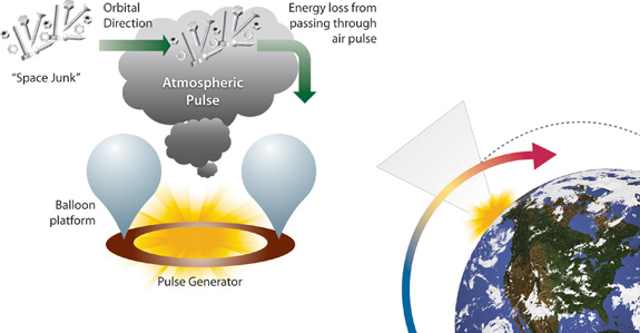
NASA takes the threat of collisions with space debris seriously and has a long-standing set of guidelines on how to deal with each potential collision threat. The American space agency is now studying a solution called Space Debris Elimination (SpaDE) to remove debris from orbit by firing focused pulses of atmospheric gases into the path of targeted debris.
These pulses will increase drag sufficiently to cause the deorbit rate to exceed the debris generation rate. The pulses themselves will fall back into the atmosphere, leaving no residual trace in orbit to interfere with LEO satellites. According to NASA, in contrast to other proposed methods,
Meanwhile, the European Space Agency’s (ESA) Clean Space initiative is studying an active debris removal mission called e
Notes
- A micrometeoroid is a tiny meteoroid; a small particle of rock in space, usually weighing less than a gram. Although they are tiny, they pose a significant threat to space exploration, because the average velocity of micrometeoroids relative to a spacecraft in orbit is 10 kilometers per second (22,370 mph or 36,000 km/h).
- Low Earth orbit (LEO) is an orbit around Earth with an altitude between 160 kilometers (99 mi) (orbital period of about 88 minutes), and 2,000 kilometers (1,200 mi) (orbital period of about 127 minutes).
- Delta is an American versatile family of expendable launch systems that have provided space launch capability in the United States since 1960. There have been more than 300 Delta rockets launched, with a 95% success rate. Two Delta launch systems – Delta II and Delta IV – are still in use, though the Delta II will soon be retired. Delta rockets are currently manufactured and launched by the United Launch Alliance.
- Sentinel-1A is a European radar imaging satellite launched in 2014. It is the first Sentinel-1 satellite launched as part of the Copernicus programme, which is the world’s largest single earth observation programme and is directed by the European Commission in partnership with the European Space Agency (ESA). It aims at achieving a global, continuous, autonomous, high quality, a wide range of Earth observation capacity. Providing accurate, timely, and easily accessible information to, among other things, improve the management of the environment, understand and mitigate the effects of climate change, and ensure civil security.
- Launched aboard Space Shuttle mission STS-130 on 8 February 2010, the Cupola is an ESA-built (European Space Agency) observatory module of the International Space Station (ISS). Its name derives from the Italian word cupola, which means “dome”. Its seven windows are used to conduct experiments, dockings, and observations of Earth. It is attached to the Tranquility (Node 3) module.
Sources
- “How the Kessler Syndrome can end all space exploration and destroy modern life” by Paul Ratner on Big Think
- Kessler Syndrome on Wikipedia
- Micrometeoroids and Orbital Debris (MMOD) on NASA.gov
- International Space Station on Wikipedia
- “The Kessler Syndrome Explained” on Space Safety Magazine
- Space Debris and Human Spacecraft on NASA.gov
- Delta Rocket Family on Wikipedia
- Space Debris Elimination (SpaDE) on NASA.gov
- Moon Landings: All-Time List [1966-2025] - February 2, 2025
- What Is Max-Q and Why Is It Important During Rocket Launches? - January 16, 2025
- Top 10 Tallest Rockets Ever Launched [2025 Update] - January 16, 2025
